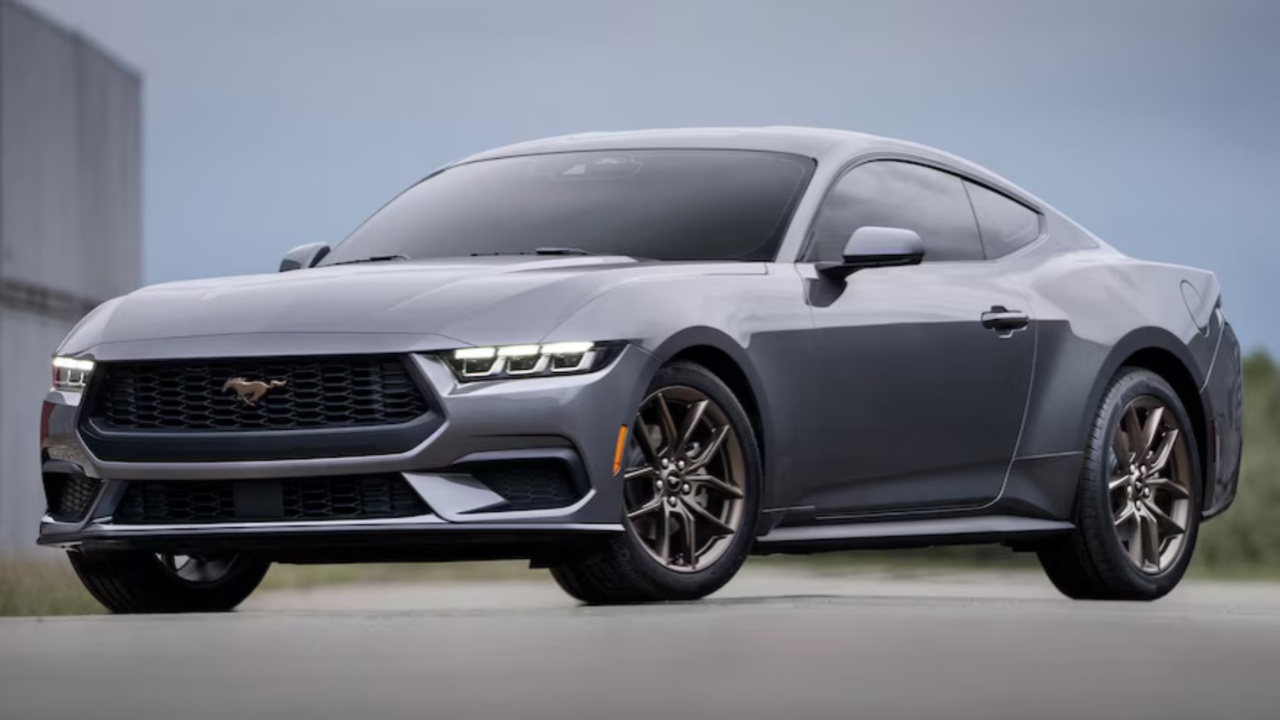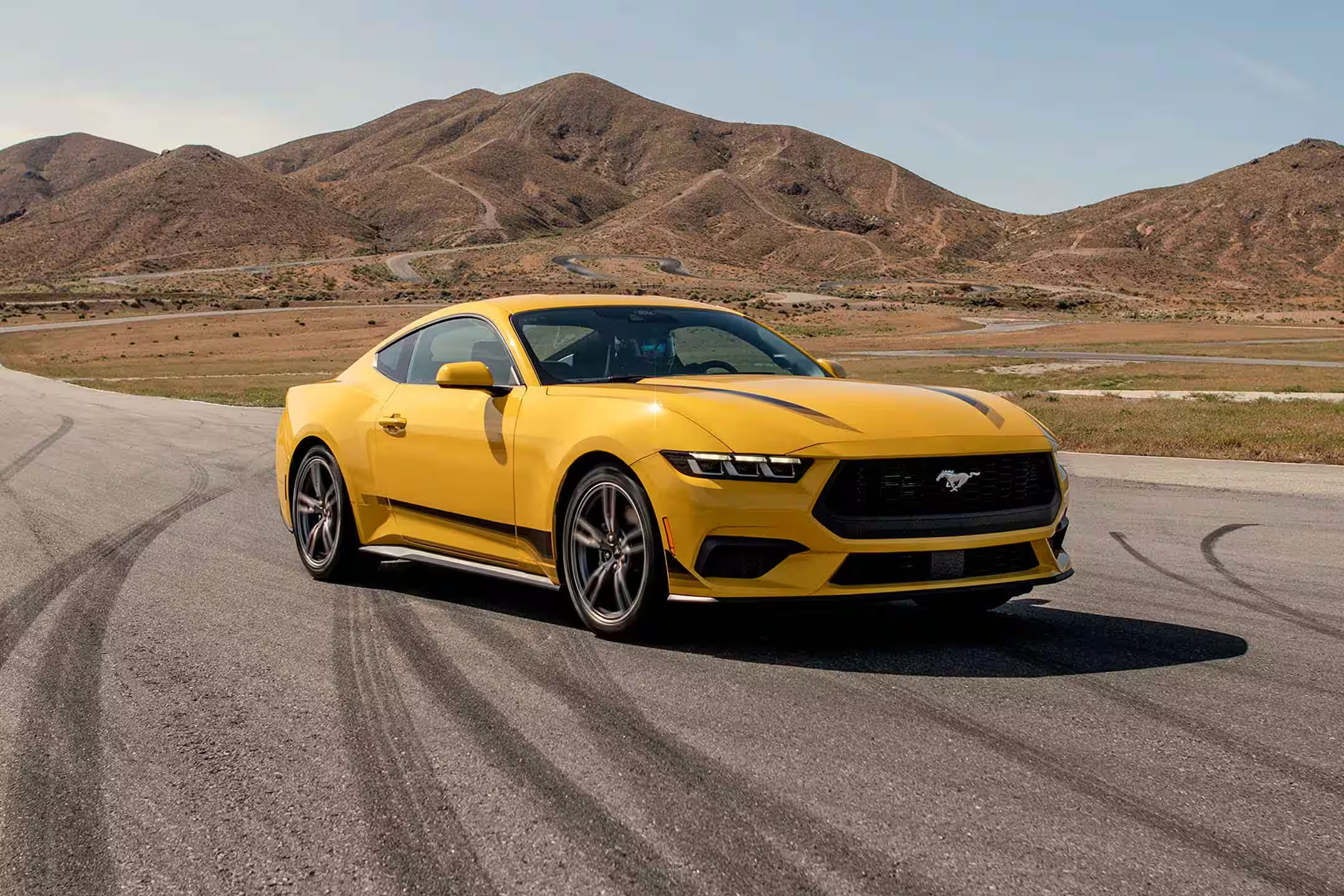Since the wheezy 88-hp 2.3-liter four-cylinder engine first made its appearance in the much-criticized Mustang II, the mere mention of a “four-cylinder Mustang” has triggered skepticism. However, the narrative takes a turn when it comes to turbocharged 2.3-liter Mustangs—especially in the present day. The journey began with a modest, carbureted 132-hp start in 1979, but advancements were made.
By 1986, the Mustang SVO boasted a formidable 200 horses. Shifts in factors like affordable fuel, improved emissions controls, and stagnant CAFE targets led to the sidelining of these turbocharged engines as V-8s regained supremacy. After nearly three decades on the sidelines, the turbo 2.3-liter four-cylinder engine made a triumphant return in the 2015 Mustang EcoBoost, packing an impressive 310 horsepower.
Fast forward to today’s seventh-generation 2024 Ford Mustang EcoBoost, where this engine continues its legacy, paired exclusively with a 10-speed automatic transmission. Ford has given the engine a significant overhaul, introducing direct and port fuel injection, a smaller twin-scroll turbo, and an electronic wastegate. While the power output sees a modest bump to 315 horsepower and the torque remains at 350 pound-feet, there’s a slight uptick in fuel efficiency despite a marginally heavier curb weight.

The optional High-Performance pack, though not yielding the slight horsepower increase seen in the previous year, offers a host of desirable upgrades. Highlights include 19-inch Pirelli P Zero PZ4 summer tires, a 3.55:1 limited-slip Torsen differential, and a performance-tuned suspension.
The package also features substantial Brembo six-piston front calipers, four-pot rears, a strut-tower brace, and an electronic pull-up parking brake activator designed for controlled slides—marketed as a drift brake. Priced at $3475, this package is more cost-effective compared to the previous year’s configuration, thanks to the decoupling of two features: the active performance exhaust ($1225) and MagneRide adaptive dampers ($1750, requiring the $5525 Premium package).
This latest iteration of the EcoBoost engine sets a new standard as the quickest four-cylinder Mustang tested, clocking a 4.5-second 60-mph time and covering a quarter-mile in 13.2 seconds at 103 mph. The braking performance is commendable, with the Brembos and Pirellis bringing the Mustang to a stop from 70 mph in 149 feet and from 100 mph in 293 feet. The car exhibits impressive grip on the skidpad, achieving 0.95-g orbits effortlessly.
However, the 10-speed transmission raises eyebrows with its narrow gear spacing and a tendency to upshift eagerly, resembling a continuously variable automatic transmission wannabe. Activating Sport mode exacerbates the situation by triggering the adaptive performance exhaust, turning the exhaust note into an overactive kazoo. Opting for the High-Performance pack is recommended, but skipping the active performance exhaust can save both embarrassment and $1225.

For those not fixated on lap times, the Mustang EcoBoost delivers a stellar driving experience. It displays agility, responsive steering feedback, and a serene interstate cruise, especially when equipped with the comfortable leather-trimmed buckets from the $3000 201A equipment package. Surpassing the 29-mpg EPA highway rating, the Mustang achieved an impressive 32 mpg in a 75-mph test, showcasing its long highway range with a 16.0-gallon tank capable of covering 510 miles.
As the journey continues, certain aspects of the 2024 Mustang leave room for scrutiny. The large curving screen, while conceptually aligned with those in beloved newer BMWs, falls short in execution. Slow response times, peculiar operational details, and obtuse menu logic diminish the overall user experience. The physical buttons and knobs, now located below the A/C vents, lack the cohesive arrangement of the previous model.
The digital cluster offers five layouts, including a nod to the classic 1987–93 Fox-body gauges. Initially met with skepticism, the imitation analog instruments prove to be the preferred choice, emphasizing legibility day or night and making the idea of customizable gauges in contemporary cars seem superfluous.
While the stigma of a lackluster performance associated with four-cylinder Mustangs has faded, the 2024 EcoBoost accelerates with vigor. Nevertheless, the absence of a manual transmission, the automatic’s eager upshifting tendencies, and the less-than-satisfying exhaust note may be deal-breakers for some. For those seeking an alternative, the Mustang GT beckons just across the showroom.

